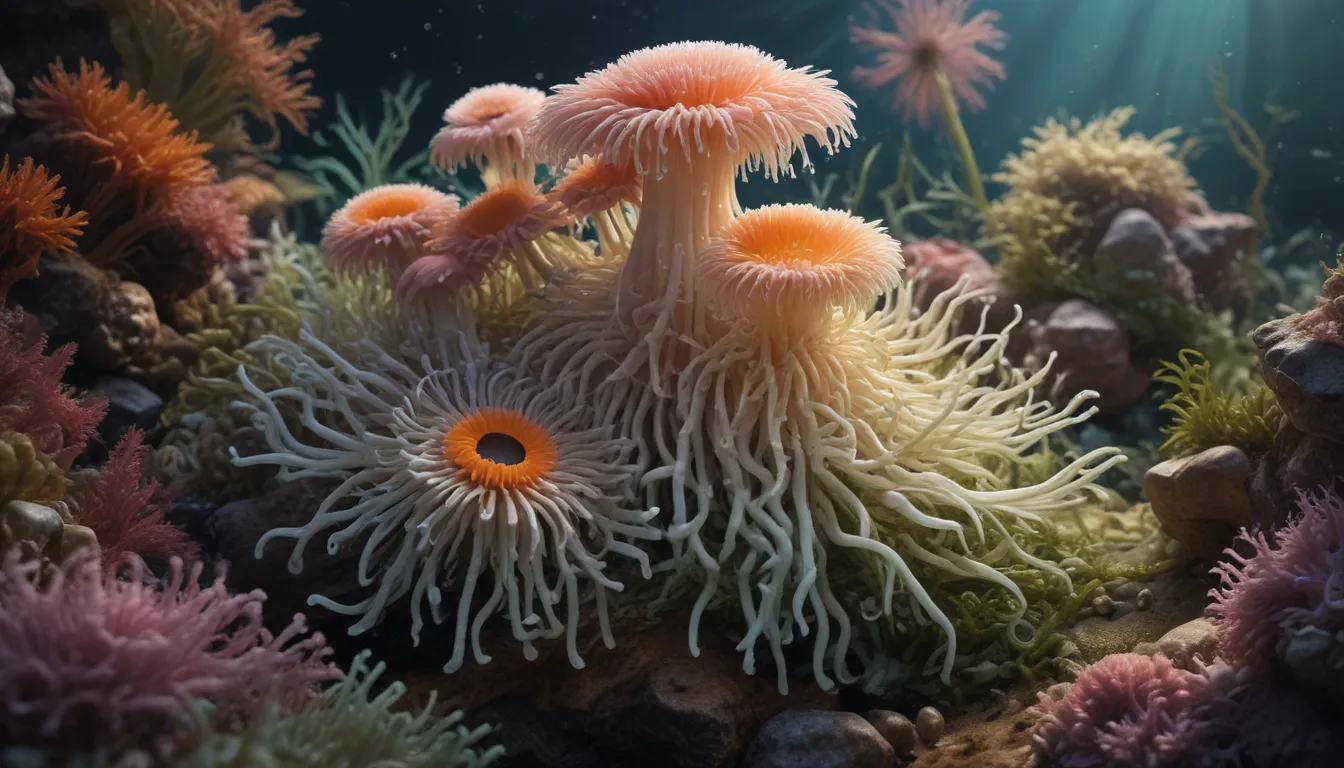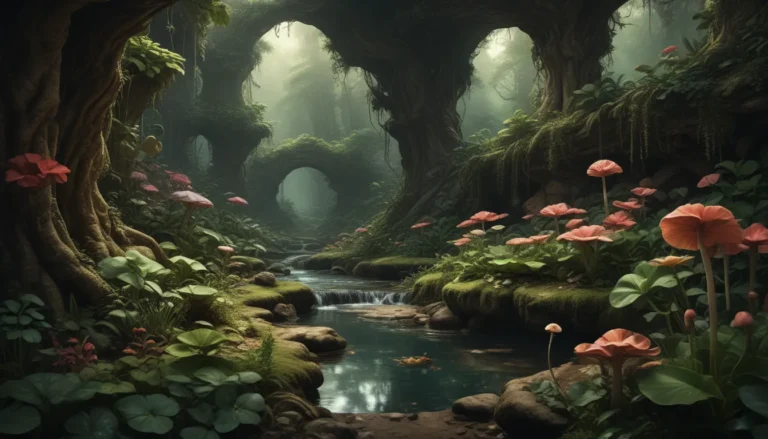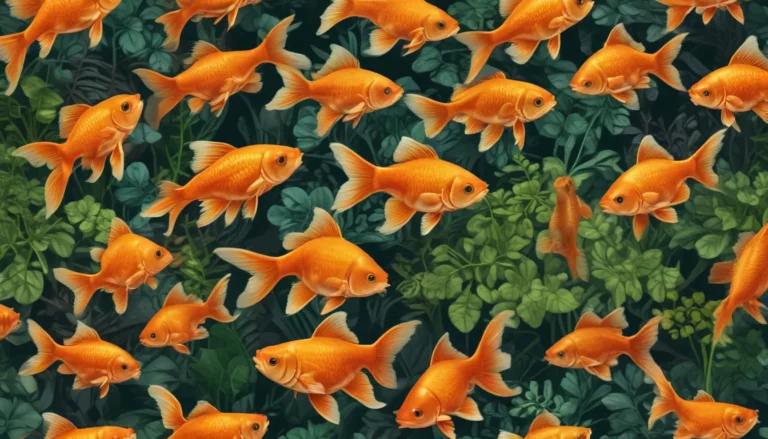The pictures we use in our articles might not show exactly what the words say. We choose these pictures to make you interested in reading more. The pictures work together with the words but don’t take their place. The words still tell you the important facts.
Sea anemones, those mesmerizing creatures of the ocean, are not just pretty flowers of the sea. They belong to the phylum Cnidaria, closely related to corals and jellyfish, and possess a whole array of unique traits that make them a subject of fascination for scientists and marine enthusiasts alike. Join us as we dive deep into the world of sea anemones and uncover 10 intriguing facts about these captivating creatures.
Understanding Sea Anemones: Beyond the Floral Facade
Sea anemones may look like delicate underwater flowers, but in reality, they are predatory animals with venomous tentacles. These creatures come in a variety of shapes and sizes, with some species measuring only a few centimeters, while others can reach up to a meter in diameter. Despite their floral resemblance, sea anemones are efficient predators that use their tentacles to capture prey and defend themselves against other oceanic creatures.
The Diversity of Sea Anemones: A Kaleidoscope of Shapes and Sizes
One of the most fascinating aspects of sea anemones is their incredible diversity in terms of shapes and sizes. These creatures can be found in various underwater habitats, from shallow coastal waters to deep-sea environments, showcasing their adaptability and resilience in different ecosystems. Their vibrant colors and varied forms add to the beauty of marine environments, making them a captivating sight for divers and marine enthusiasts.
The Origins of the Name: Inspired by Terrestrial Flowers
The name "sea anemone" comes from the Greek word "anémonē," meaning "daughter of the wind." This nomenclature was derived from their flower-like appearance and gentle swaying motion in the water. Despite their ethereal beauty, sea anemones are efficient predators that rely on their venomous tentacles to capture and immobilize small fish and invertebrates for food.
The Unique Feeding Mechanism: A Deadly Dance of Tentacles
Sea anemones have a distinctive feeding mechanism that sets them apart from other marine animals. At the center of their tentacles lies a mouth surrounded by stinging cells called nematocysts. When prey comes into contact with these tentacles, the nematocysts release venom, immobilizing the target. The sea anemone then uses its tentacles to transport the paralyzed prey to its mouth for consumption, showcasing its efficiency as a predator.
Symbiotic Relationships: Partnerships Under the Sea
Sea anemones are known for forming symbiotic relationships with various marine organisms, including clownfish. In this mutualistic partnership, the sea anemone provides protection for the clownfish, while the clownfish defends the sea anemone from predators and parasites. This unique bond highlights the interconnectedness of marine life and the importance of cooperation in underwater ecosystems.
Regenerative Abilities: The Gift of Healing
Sea anemones possess remarkable regenerative abilities, allowing them to recover from injuries and even re-grow lost body parts. This astonishing trait has captured the interest of scientists studying tissue regeneration in marine animals. By unraveling the mechanisms behind this healing process, researchers hope to gain insights into the potential applications of sea anemones in biomedical research.
Ecological Importance: Guardians of the Ocean
Sea anemones play a vital role in marine ecosystems by contributing to the overall biodiversity and functioning of underwater habitats. As predators and prey, they form intricate links in the food webs that support marine life, showcasing their significance in maintaining the delicate balance of oceanic ecosystems. Their presence enriches the underwater world and highlights the interconnectedness of all living organisms in the ocean.
Artistic Inspirations: Beauty in Creativity
The enchanting beauty and mysterious nature of sea anemones have inspired artists, writers, and filmmakers to portray them in various art forms. Their ethereal presence and otherworldly allure continue to captivate the imagination of creatives across different mediums, highlighting the profound impact of these creatures on human culture and artistic expression.
Scientific Exploration: Unraveling the Mysteries of Sea Anemones
Sea anemones have long been a subject of scientific fascination due to their unique biological characteristics and ecological significance. Researchers continue to explore the mysteries surrounding these captivating creatures, shedding light on their evolutionary history, physiological adaptations, and potential applications in various fields of research. The study of sea anemones offers valuable insights into the wonders of marine life and the intricate adaptations of organisms to their underwater habitats.
In conclusion, sea anemones are truly remarkable creatures that embody the beauty and complexity of marine ecosystems. By understanding and appreciating these captivating animals, we can contribute to the preservation of our oceans and the diverse life they support. As we continue to explore the wonders of the natural world, let the enigmatic sea anemones serve as a reminder of the awe-inspiring diversity that awaits discovery beneath the waves.
FAQs
What do sea anemones eat?
Sea anemones primarily feed on small fish, shrimp, and plankton. They use their venomous tentacles to capture and immobilize prey before consuming them.
Are sea anemones dangerous to humans?
While sea anemones are not aggressive towards humans, their stinging cells can cause irritation and mild discomfort if touched. It's important to admire these creatures from a safe distance to avoid any potential harm.
Sea anemones, those enchanting creatures of the ocean, continue to intrigue and inspire us with their unique characteristics and ecological importance. As we unravel the mysteries of the underwater world, let the beauty of sea anemones remind us of the wonders that await exploration beneath the waves.






